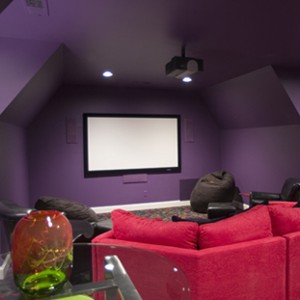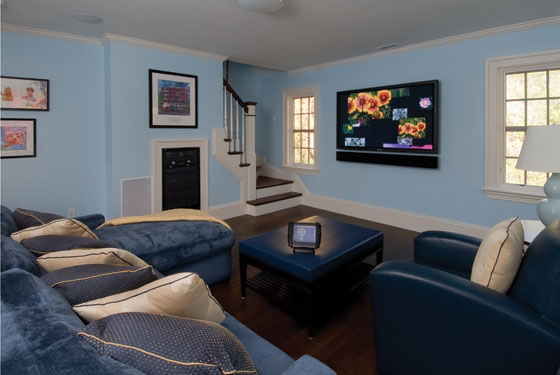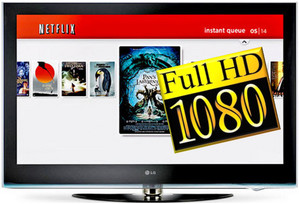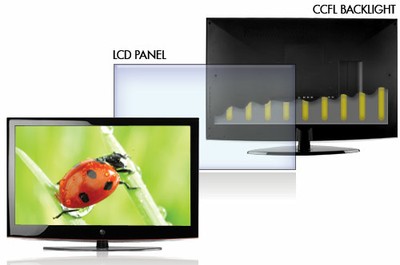
Time to Tune Up Your Home Theater?
Make your old system new again
Home theaters have been around for some time now. Sure, the screens have become bigger and the speakers more powerful. Throw in a media streamer or server, and the way a home theater looks and behaves today is a lot different than it did just five years ago. So, veteran owners of home theaters, is it time to update? Should you invest in new gear? Or, maybe there are some simple tweaks you can make that’ll have your home theater humming like it’s brand new.
We asked a few seasoned custom electronics professionals (CE pros) for their recommendations. Some of the suggestions you might be able to do yourself; for others you will probably need the help of a pro. Regardless, “A/V systems need maintenance just like anything else we use daily, like cars, HVAC systems and computers. There will always be maintenance needs and costs associated with your system,” says Jason Voorhees of Cantara Design, Costa Mesa, Calif., Many CE pros offer home theater tune-ups as part of maintenance package. Expect to spend between $125 to $300 for the service, which may include just a few updates or many, depending on the system specifics.

Dust off your equipment: Dust can cause home theater components to run at a higher operating temperature, potentially decreasing their lifespan. Any components that have accessible filters (projectors, media servers, PC, etc.), should be cleaned once a year.
Audio Tuning: If you originally tuned your system (or had a professional do it) right after taking your speakers out of their boxes, it’s almost a given that the elastic properties of your drivers have changed over time. As the drivers loosen up from use, the sound they produce can change. It is probably time to re-tune.
Settings: Assuming your home theater system is 1080p capable, make sure all of your devices are set to output at 1080p, include satellite and cable boxes, Apple TVs, etc.
Brightness: One thing that can decrease over time is the brightness of your video display, especially that of projectors. Every display has some built-in picture modes; these settings are often called Vivid, Dynamic, Movie, Standard, 3D, etc. You may find that by simply adjusting a picture mode that you suddenly have a better looking video display.
Update: If your system isn’t 1080p and HDMI, it should be. You’ll open your theater up to a world of high-def and streaming services.
Calibrate: refocus and recalibrate the projector; recalibrate the surround-sound system.
Firmware: Install and test new firmware updates for every part of your system. The updates may fix bugs or may make new features available.
Seats & Curtains: Clean and test all of the theater seating, and repair if necessary. If the theater has curtains, they should be cleaned also.
Batteries and Bulbs: If any components use rechargeable batteries (remote controls, power supplies, etc.), test them and replace if necessary. Replace dead light fixtures.
Clean the Screen: Use a tape-based lint roller on the black fabric frame (if you have a fixed screen). You’ll be amazed at how much dust this material attracts. For a fixed screen use a soft horse-hair brush to gently brush off the screen surface. If you have a roll-up screen, bugs like to fly into the roller and get embedded into the screen. Call the manufacturer to determine what kind of cleaning solution is best.
Test Tone: How do you know if a tweeter or a crossover is blown on one of your speakers if you don’t spend 20 minutes doing a simple test tone sweep on each speaker? Not sure if the tweeter is working? Put your hand over the tweeter and listen to the speaker. If the sound doesn’t change, you probably have a problem. Your listening tastes may change too, and by calibrating yearly for level, distance and speaker position (if your speakers are moveable), you’ll be able to tune-up according to your changing tastes.
Delete: Spend 10 minutes deleting channels you don’t watch from your DirecTV or cable TV on-screen guide.
Reboot: Reboot your DVR every 2 months. You might be surprised at how much faster it will operate.
New Additions: Many older home theaters have a set-top box, a DVD player and a local library of content on a media server, but may not have a streaming media player. It’s time to get an Apple TV, Roku or some other device that can stream content to your home theater. This might also involve reprogramming your remote and adding new cabling.

by Lisa Montgomery
http://www.electronichouse.com/article/time_to_tune_up_your_home_theater/D1/
Custom Installation Services, LLC – Your Home Theater Tune Up Specialists Charlotte, NC and surrounding areas
Posted in 3d movies, 3D TV, Audio Demos, Audio Systems, Automation, Blu-ray, Flat Panel TV's, Gaming Systems, HDMI Specs, Home Theater, i-Pad, IP Cameras, LED, Media Rooms, Multi Room A/V, Music and Movies, Outdoor Speakers, Panamax, Sports Bar, Structured Wiring, technology, Theater Seating
|
Netflix 1080p Timeline: When Will it Come to CE Devices?
 The existing universe of 1080P Netflix devices includes the Sony Playstation3, Roku 2 XS and XD, WD TV Live and now LG 2011 Smart TVs and Samsung Smart Hub enabled devices, according to Tech of the Hub. Netflix launched 1080p streaming in 2010, but we’ve barely seen it in smart TVs, networked Blu-ray players and other common CE devices from top brands such as Samsung, LG and Tivo.
Netflix 1080p was supported exclusively by the Playstation 3 when it launched last year, and since then has trickled out to media players from Roku and Western Digital. Netflix only this summer released a software developers kit for everyone else, and those everyone elses are finally incorporating the technology into their new and legacy devices (via firmware upgrade).
That’s good news for Netflix Watch Instantly lovers, but might be confusing as well.
As Tech of the Hub suggests:
The toughest part for the consumer is distinguishing the differences between all of the Netflix enabled TVs, Blu-ray players and streaming boxes at retail stores. All of them have the same Netflix logo on them. So, you can’t tell which Netflix boxes support 1080P, surround sound and subtitles.
The blog site has reached out to several major brands to determine when they will enable 1080p Netflix streaming for their CE devices.
Here is an overview, but check out Tech of the Hub for more details.
Samsung updated its Netflix app two weeks ago for Smart Hub-enabled Blu-ray players, TVs and home theater systems.
LG displays with Smart TV have been updated as well, with other LG devices following this month.
Netgear’s new NeoTV NTV-200 will support Netflix 1080p next year.
Pioneer’s Blu-ray players will not support 1080p for Netflix.
TiVo is working on 1080p Netflix streaming, but won’t say when it will be commercially available.
The big question is: Will Netflix raise its rates again when 1080p becomes universally available?!
By Julie Jacobson
http://www.cepro.com/article/netflix_1080p_timeline_when_will_it_come_to_ce_devices/?utm_source=CEPWeekly&utm_medium=email
Custom Installation Services, LLC – First choice for low voltage wiring in Charlotte, NC and surrounding areas
Posted in 3d movies, 3D TV, Blu-ray, Flat Panel TV's, Gaming Systems, HDMI Specs, LED, Low Voltage Contractors, Media Rooms, Music and Movies, News, technology
|
Tagged 3d theater in charlotte, apc dealers charlotte, audio advice, audio video architects charlotte nc, audio video installation matthews, Best Buy, camera installation charlotte, central vac dealers in charlotte nc, charlotte audio advice, charlotte custom home builders, charlotte hd installers, Charlotte Home Theater, charlotte nc architects, Charlotte onkyo dealers, cis, cis nc, commercial low voltage installation charlotte, custom home builders in lake norman, custom home tv installers charlotte, geek squad in charlotte nc, HD installers in Charlotte nc, home audio consultation and design, Home theater installers Lake Norman, low voltage contractors charlotte, low voltage contractors in lake norman nc, media room lighting charlotte, nirv installation charlotte, nirv speakercraft charlotte, polk speakers charlotte, sharp tv dealers charlotte, speakercraft dealers in charlotte nc, Universal Remote programmers in charlotte nc, zobo
|
LED vs LCD TVs
How are LED TVs different from LCD TVs?
Simply stated, an LED TV is an LCD TV that is lit with an LED (light emitting diode) light source instead of CCFLs (cold cathode fluorescent lamp). Manufacturers such as Samsung began the trend of marketing the LED-lit LCD TV as an “LED TV” likely in an attempt to easily differentiate the product from typical CCFL lit LCD products.While an LED TV is still technically an LCD TV, just get used to seeing this type of designation. We don’t really have a problem with it and it does, among other things, seem to make it easier to say it out loud.

An LCD TV is comprised of several layers. The front layer is a piece of glass filled with liquid crystals that move and change to produce the images we see on the screen. But images can only be viewed when the screen is illuminated. This requires a light source. The light source is the difference between LED TV and conventional LCD TV.
Here’s a simple explanation of how it works: Conventional LCD TVs use fluorescent tubes (CCFL) to provide light to illuminate the LCD panel and make the images viewable. In an LED TV, the LCD panel is lit from behind with an LED-based backlight. LED lights can be more precisely controlled and can produce richer blacks and a better contrast ratio for a more vivid viewing experience.
Edge Lit vs. Rear Lit
With LED TVs, edge-lit technology is what allows some sets to be less than 1-inch thick. The LEDs are actually arranged around the very edge of the screen, allowing the display to be very thin, since the lighting technology isn’t positioned behind the screen. While this does indeed grant a thinner display, it typically (this is changing now) precludes te manufacturer from setting up a system that optimizes contrast across various areas of the screen.

Smart Dimming and Zones
Several manufacturers are optimizing their LED backlit displays to produce different amounts of backlighting on different areas of the screen. In this way, you can see content that contains bright areas on the screen along with very black areas. Think of a candle lit in a dark room. With your typical edge lit display you have one level for the overall backlight. With Smart Dimming, you can brightly light the part of the screen with teh candle, and then all but turn off the LEDs behind the black areas of the screen.
Should you expect to pay more for LED TV? What are the benefits of LED vs. LCD?
LED TVs like those form Westinghouse Digital are often edge-lit, which means they are generally more energy efficient, weigh less and cost less than full array LED TVs. Some LED TVs are engineered and produced so efficiently that they may even cost less than conventional CCFL lit LCD TVs. The bottom line is that LEDs are getting cheaper and cheaper and soon we estimate they will actually be easier and cheaper to produe than CCFL backlit displays.
LED TVs in general use less energy (and are therefore more efficient and economical to operate) than conventional LCD TVs. LED TVs are also thinner and weigh less than LCD TVs and generally create a brighter picture. For those who are environmentally concerned, LED TVs also contain no Mercury or Lead.
Presented by Westinghouse Digital and edited by Clint DeBoer
http://www.audioholics.com/education/display-formats-technology/led-vs-lcd-tvs
Custom Installation Services, LLC – First choice for low voltage wiring in Charlotte, NC and surrounding areas
Posted in 3D TV, Blu-ray, Flat Panel TV's, Gaming Systems, HDMI Specs, Home Theater, LED, Low Voltage Contractors, Media Rooms, Multi Room A/V, Music and Movies, News, recycling, Structured Wiring
|
Tagged 3d theater in charlotte, audio advice, Best Buy, Blu-ray, central vac dealers in charlotte nc, charlotte audio advice, charlotte custom home builders, connect wii to tv, custom home builders in charlotte nc, geek squad in charlotte nc, HD installers in Charlotte nc, Home theater installers Lake Norman, hook up xbox, innovative systems, LCD TV Installation, LED TV Installation, Low voltage contractors, Marantz, marantz dealers in Charlotte nc, speakercraft dealers in charlotte nc, tv installation, tweeter charlotte, Universal Remote programmers in charlotte nc, zobo
|
|
|
|








